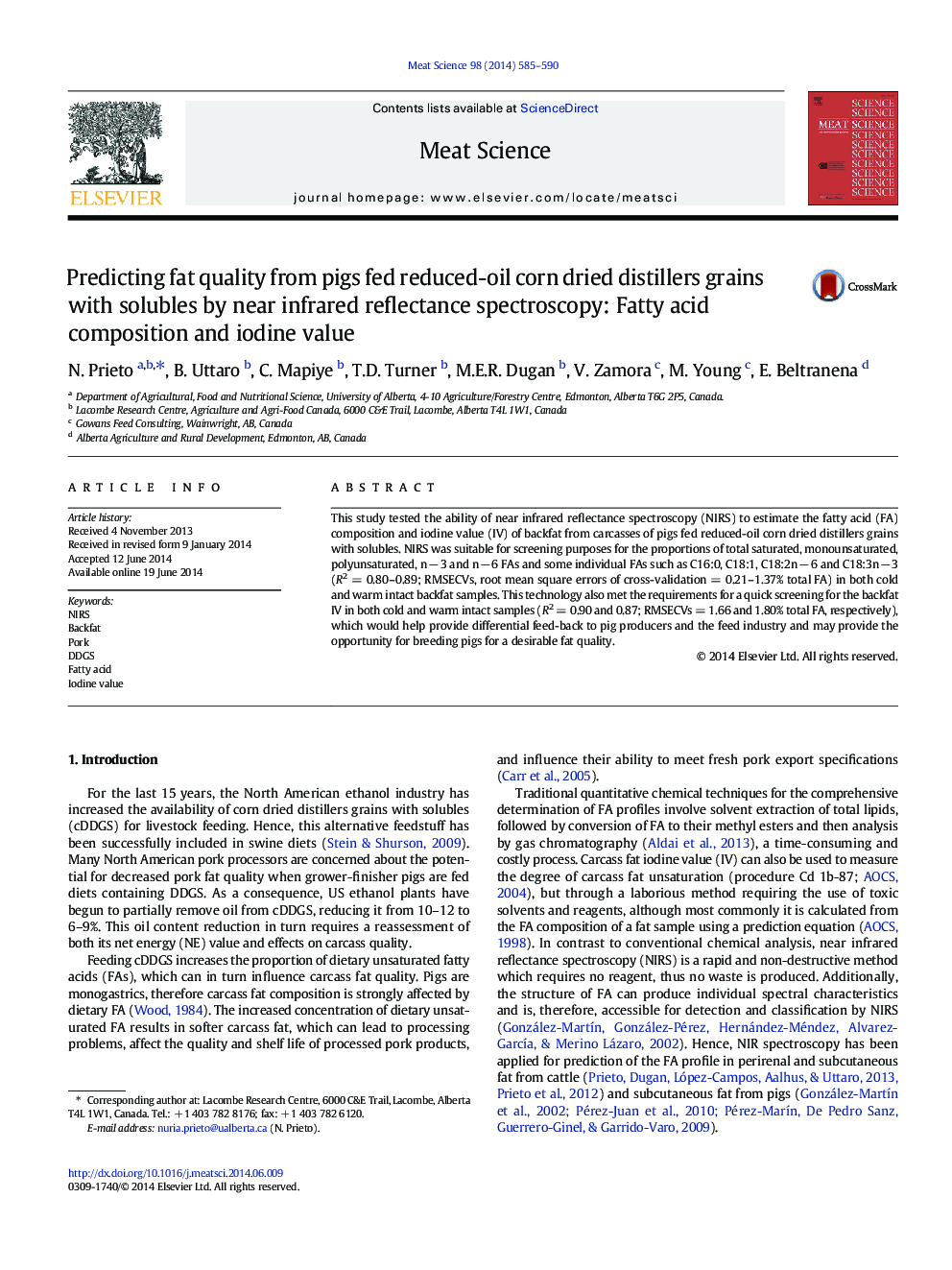| Article ID | Journal | Published Year | Pages | File Type |
|---|---|---|---|---|
| 2449986 | Meat Science | 2014 | 6 Pages |
•NIRS was tested to predict fat quality from pigs fed reduced-oil DDGS.•NIRS was suitable for screening purposes for the proportion of major FA groups.•Some individual FAs were successful for screening by NIRS in intact backfat samples.•NIRS met the requirements for a quick screening for the pork backfat iodine value.
This study tested the ability of near infrared reflectance spectroscopy (NIRS) to estimate the fatty acid (FA) composition and iodine value (IV) of backfat from carcasses of pigs fed reduced-oil corn dried distillers grains with solubles. NIRS was suitable for screening purposes for the proportions of total saturated, monounsaturated, polyunsaturated, n − 3 and n − 6 FAs and some individual FAs such as C16:0, C18:1, C18:2n − 6 and C18:3n − 3 (R2 = 0.80–0.89; RMSECVs, root mean square errors of cross-validation = 0.21–1.37% total FA) in both cold and warm intact backfat samples. This technology also met the requirements for a quick screening for the backfat IV in both cold and warm intact samples (R2 = 0.90 and 0.87; RMSECVs = 1.66 and 1.80% total FA, respectively), which would help provide differential feed-back to pig producers and the feed industry and may provide the opportunity for breeding pigs for a desirable fat quality.
